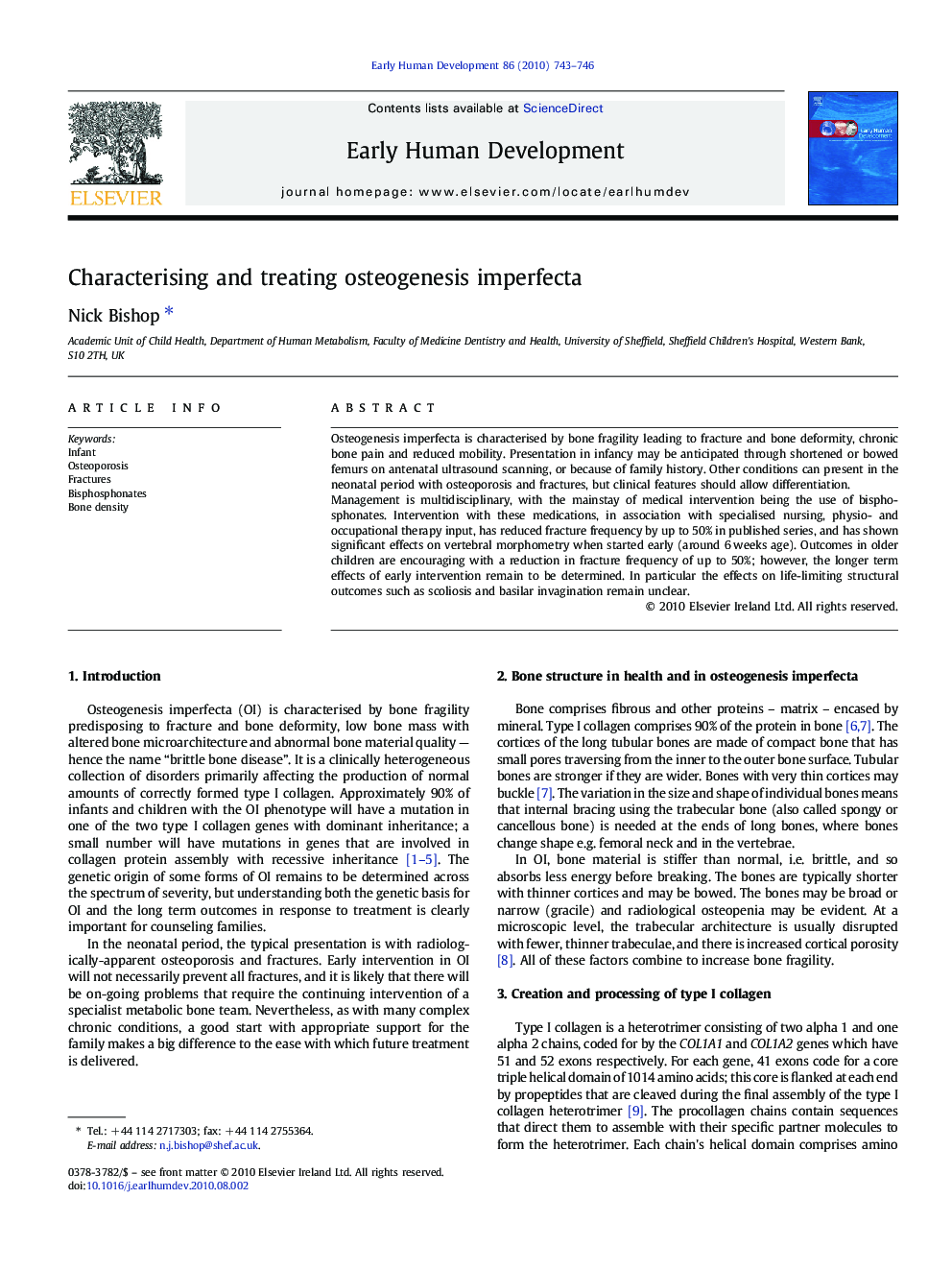| Article ID | Journal | Published Year | Pages | File Type |
|---|---|---|---|---|
| 3917418 | Early Human Development | 2010 | 4 Pages |
Osteogenesis imperfecta is characterised by bone fragility leading to fracture and bone deformity, chronic bone pain and reduced mobility. Presentation in infancy may be anticipated through shortened or bowed femurs on antenatal ultrasound scanning, or because of family history. Other conditions can present in the neonatal period with osteoporosis and fractures, but clinical features should allow differentiation.Management is multidisciplinary, with the mainstay of medical intervention being the use of bisphosphonates. Intervention with these medications, in association with specialised nursing, physio- and occupational therapy input, has reduced fracture frequency by up to 50% in published series, and has shown significant effects on vertebral morphometry when started early (around 6 weeks age). Outcomes in older children are encouraging with a reduction in fracture frequency of up to 50%; however, the longer term effects of early intervention remain to be determined. In particular the effects on life-limiting structural outcomes such as scoliosis and basilar invagination remain unclear.
